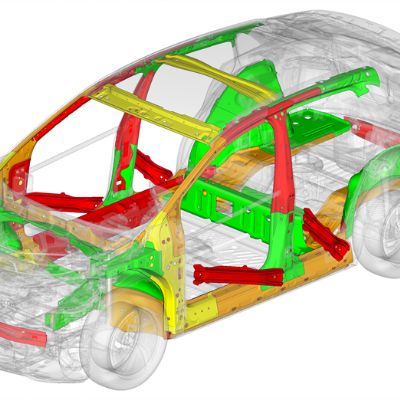Don’t Guess; Gather Data
A friend of mine frequently says, “Solutions without data are nothing more than guesses.” That same philosophy can be applied to strip layouts: Selecting a progressive-die process based on a consensus of opinions is nothing more than a group’s best guess.
Financial business decisions often rely on multiple sources of data, such as financial statements, financial ratios, and forecasting and investment analysis. But mission-critical technical decisions such as the selection of a strip layout, which can affect a business’s bottom line for years, often are based on a collection of opinions.
At a recent PMA METALFORM symposium on advanced high-strength steels (AHHS), I presented a talk titled, Performance-Based Die-Engineering Strategies. These strategies rely on knowledge-based systems rooted in science and mathematics, rather than on traditional experience-based systems that rely on individual and group experiences. A knowledge-based system is particularly important for processing AHSS stampings, since experience-based systems either are nonexistent or woefully insufficient.
Another shortcoming of experience-based systems: They are dominated by fears, especially the fear of repeating past mistakes and the fear of the unknown. These fears work their into our strip layouts and compromise the die design.
Let’s consider how performance-based engineering strategies can be applied to progressive-die strip layouts. In order to select the best strip layout from the several available options, the designer should compare and rank each layout using a relevant scoring system. Among the factors that influence die cost and quality, four have been proposed as most critical (by Lin and Sheu, authors of Knowledge-based Sequence Planning of Shearing Operations in Progressive Dies, International Journal of Production Research, 2010). They are:
• Station number factor, Fn
• Moment balancing factor, Fb
• Strip stability factor, Fs
• Feed height factor, Fh
An evaluation score (Ev) then can be computed using these four factors and their corresponding weighting factors—wn, wb, ws, wl:
Ev = (wn x Fn) + (wb x Fb) + (ws x Fs) + (wh x Fh)
The designer or process engineer selects the four weighting factors (from 10 to 100) based on how much each factor contributes to the strip evaluation. A higher score indicates better efficiency in cost and production.
For example, presses for progressive dies usually require large beds to accommodate multiple workstations. More stations require a wider press bed, and a longer die results in higher construction costs and increased tolerance accumulations.
Station-number factor Fn determines a strip layout’s effectiveness in terms of the number of stations it includes. An Fn value of 100 (best possible) represents a minimum number of stations—two. In contrast, an Fn of 10 represents the maximum number of stations, typically the total number of punches used for cutting and bending.
| Fn = 100 – 90 x | N – Nmin
Nmax – Nmin
|
N = total number of stations in the strip layout; Mmax = total number of punches (cutting and bending); and Nmin = the possible minimum number of stations, Nmin = 2
Tipping Moment
Also required is a moment-balancing factor, Fb. When two or more die stations perform their task on the die strip, the forces simultaneously act on the strip at different points. If the reaction forces are unbalanced relative to the press centerline, ram tipping occurs. The moment-balancing factor indicates how near to center the equivalent reaction forces are to the axis of the press ram. Since the center of the die usually aligns under the center of the ram, this factor considers tipping-moment severity—seldom considered in strip layouts.
All stamping presses have a maximum tipping moment, established by the press builder, that represents the maximum off-center loading condition that the press can safely handle without suffering long-term damage. Designers use this rating to establish a maximum off-center loading parameter, Dmax.
To calculate the moment balancing factor:
When d = 0, the center of the ram and of the stamping loads are completely matched, so Fb = 100 (best condition). When d > Dmax, the deviation is so serious that Fb = 10 (worst condition). Similar factors can be established for strip stability and strip lift. Then the designer assigns corresponding weighting factors based on their importance to the strip layout.
The resulting evaluation score (Ev) provides die and process engineers with a performance-based numerical rating to evaluate each strip layout. The evaluation score has relative meaning for different layouts producing the same part. It therefore can be used to find the best solution for that particular part.
Or, we can continue guessing. MF Technologies: Materials, Tooling








